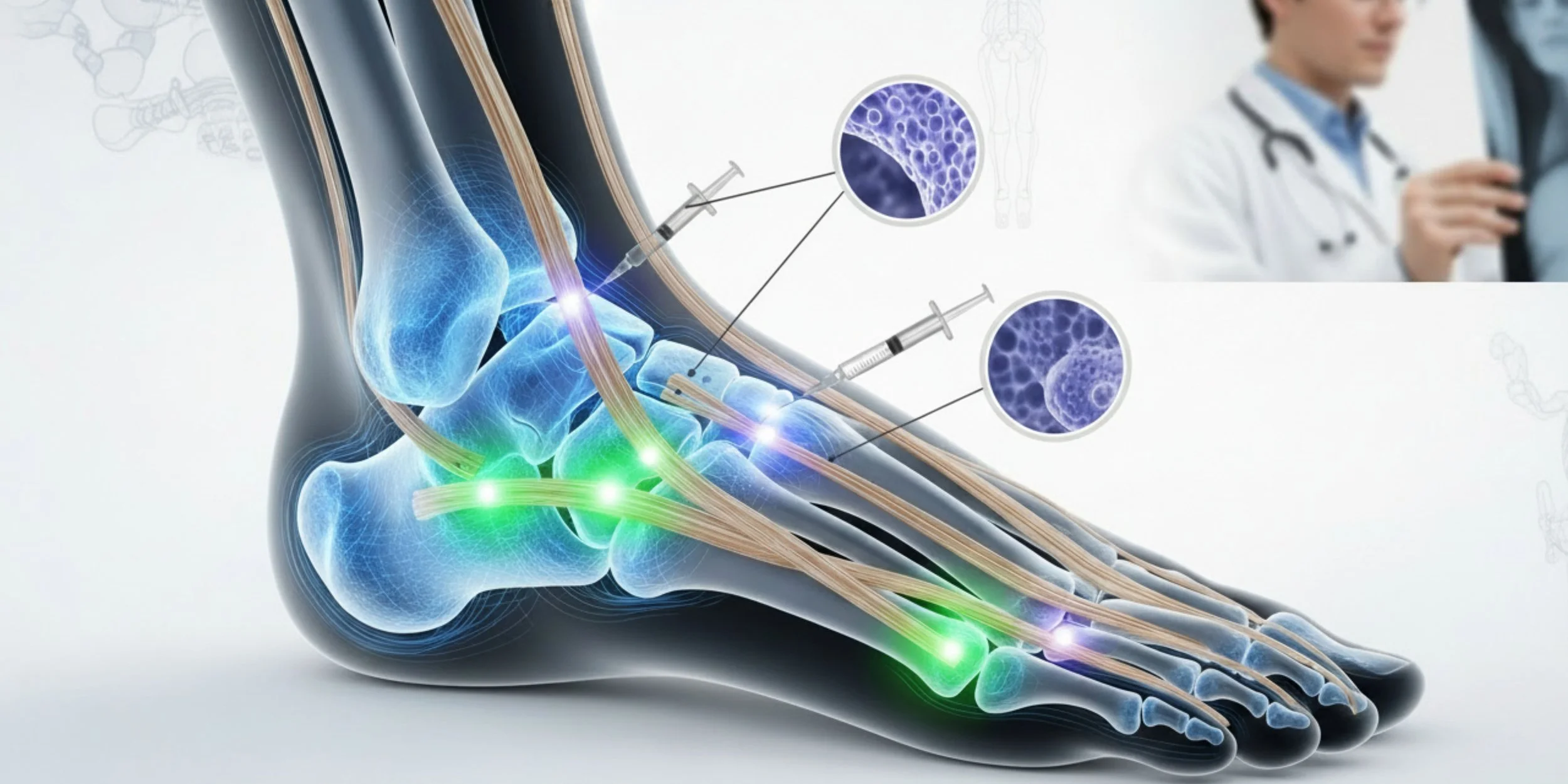Diabetes and Your Feet: Hidden Changes You Might Not Notice
Diabetes is a chronic condition that affects how your body processes blood sugar. While many people are aware of its impact on the heart, kidneys, and eyes, few understand the profound ways diabetes can change your feet. These changes aren’t just cosmetic—they can significantly impair mobility and quality of life, and in the worst cases, lead to serious complications like ulcers, infections, and even amputation.
In this comprehensive guide, we’ll explore how diabetes gradually reshapes the structure and function of your feet. From nerve damage to circulation issues and joint stiffness, the effects of high blood sugar are far-reaching—but with knowledge and proactive care, you can protect your feet and preserve your independence.
Understanding Diabetes and Its Impact on the Body
Diabetes, particularly type 2 diabetes, is characterized by high blood sugar levels over time. This persistent elevation causes damage to small and large blood vessels, as well as to nerves throughout the body. These complications can develop silently, and one of the first places they show up is in the feet.
Why the feet?
They’re the farthest from the heart, so circulation challenges hit there first.
The feet endure daily wear and tear, making them vulnerable to injury.Nerves in the feet are often the first to show signs of diabetic damage.
All of this makes the feet both a canary in the coal mine and a major risk zone for diabetic patients.
The Connection Between Diabetes and Foot Health
Foot health is often overlooked until something goes wrong. But in diabetes, foot care is not optional—it’s essential. An estimated 50–70% of people with diabetes develop neuropathy, a form of nerve damage that commonly affects the feet. And as many as 15% of people with diabetes will develop a foot ulcer in their lifetime.
These statistics are concerning because diabetic foot complications:
Take longer to heal
Are prone to infection
Are often painless due to nerve damage
Can lead to hospitalization or amputation if not managed early
The sooner we understand and address how diabetes reshapes the feet, the better the outcomes.
Common Foot Problems Associated with Diabetes
Some of the most frequently seen foot issues in people with diabetes include:
Hammertoes and claw toes (from muscle imbalance)
High arches or collapsed arches
Dry, cracked skin (especially on the heels)
Corns and calluses
Foot ulcers
Fungal infections like athlete’s foot or toenail fungus
Charcot foot (a severe form of joint collapse)
Peripheral arterial disease (PAD)
Amputation (in severe, untreated cases)
These complications aren’t random—they result from a cascade of structural and functional changes that begin with elevated blood sugar levels.
How High Blood Sugar Affects Foot Structure
So how does diabetes actually reshape your feet?
1. Muscle Weakness from Nerve Damage
Nerve damage (neuropathy) affects the muscles that control foot movement and alignment. When these muscles weaken or stop functioning properly:
The toes start curling (hammertoe or claw toe deformities)
The arch of the foot may rise excessively or collapse
Pressure points shift, increasing the risk of skin breakdown and ulcers
2. Loss of Natural Fat Padding
Good circulation helps maintain the natural fat pads on the bottom of your feet, which cushion your steps and absorb shock. In people with diabetes and poor circulation:
These fat pads thin out or disappear altogether
Walking becomes more painful and risky
Without cushioning, pressure sores and ulcers are more likely to develop
3. Joint Stiffness and Deformities
Diabetes leads to glycation, a process where excess sugar attaches to collagen in joints and tendons. This makes them:
Stiff and inflexible
Prone to deformities
Susceptible to injury
The Achilles tendon tightens, reducing ankle mobility. The 33 joints in each foot don’t move smoothly anymore, causing abnormal gait patterns and increasing strain on certain areas.
The Role of Neuropathy in Diabetic Foot Changes
Neuropathy is one of the most damaging complications of diabetes, and it plays a central role in reshaping the feet.
What Is Neuropathy?
Neuropathy refers to nerve damage caused by high blood sugar. In the feet, it leads to:
Loss of sensation (you may not feel pain or heat)
Muscle weakness (leading to structural deformities)
Loss of coordination or balance
Tingling, numbness, or burning sensations
Because you may not feel injuries or pressure, wounds can go unnoticed for days—or even weeks—leading to dangerous infections.
Importance of Regular Foot Care for Diabetics
If you have diabetes, caring for your feet is just as important as monitoring your blood sugar. A daily foot care routine can catch small problems early, before they escalate.
Daily Foot Care Tips:
Inspect your feet daily using a mirror or asking for help
Wash feet with warm (not hot) water and dry thoroughly
Moisturize to prevent cracks (but not between toes)
Wear clean, seamless socks
Never walk barefoot, even at home
Trim toenails straight across to avoid ingrown nails
Check your shoes daily for rough seams or debris
Signs of Foot Complications to Watch For
Early detection is key to preventing severe outcomes. Seek medical attention immediately if you notice:
Blisters, sores, or wounds that don’t heal
Swelling, redness, or warmth
Skin discoloration (especially black, blue, or yellow tones)
Foul-smelling drainage
Changes in foot shape or arch
Sudden loss of sensation
Fever or chills alongside foot wounds
These symptoms may indicate infection, ulceration, or other serious complications like Charcot foot—a condition where the bones in the foot collapse due to neuropathy and repeated trauma.
Preventative Measures for Maintaining Healthy Feet
Preventing foot problems begins with prevention and awareness. Here are some ways to stay ahead:
1. Blood Sugar Control
Maintaining healthy blood glucose levels slows the progression of neuropathy and vascular disease.
2. Footwear Matters
Invest in proper diabetic shoes or custom orthotics to protect your feet from friction, pressure, and injury. Shoes should be:
Supportive
Wide in the toe box
Seamless inside
Fitted by a foot specialist if necessary
3. Stay Active, But Safe
Walking improves circulation, but do it safely:
Wear proper shoes
Avoid uneven terrain
Stop if you notice any pain or signs of irritation
4. Regular Check-Ups
See a podiatrist at least once a year—or more frequently if you have foot problems. A professional can:
Trim toenails safely
Treat calluses or corns
Monitor for ulcers or deformities
Educate you on custom footwear and insoles
Treatment Options for Diabetic Foot Issues
Even with the best care, issues can arise. The good news is that early treatment often prevents long-term damage.
Conservative Treatments:
Wound care (cleaning, dressing, debridement)
Antibiotics for infections
Offloading devices like custom shoes or boots
Orthotics or bracing to correct deformities
Advanced Interventions:
Surgical correction of deformities
Skin grafts or wound therapy
Amputation (in cases where infection threatens overall health)
Emerging Therapies:
Laser therapy for neuropathy pain
Hyperbaric oxygen therapy for stubborn wounds
Stem cell therapies (in development)
Conclusion: Prioritizing Foot Health in Diabetes Management
Your feet may not always be top of mind—but in diabetes, they should be. The changes caused by high blood sugar, neuropathy, and poor circulation aren’t just uncomfortable—they’re potentially life-altering. But the good news is this: Most diabetic foot complications are preventable.
By staying informed, being proactive with daily foot care, wearing the right shoes, and regularly seeing a podiatrist, you can reduce your risk of ulcers, infections, and amputation.
Final Tip:
If you notice even a small sore or blister—don't wait. Seek help. Your future mobility may depend on it.
Need Help with Your Foot Health?
Book an appointment today with a podiatrist who understands diabetes. Whether you're managing early neuropathy or dealing with stubborn wounds, expert foot care can keep you moving safely and confidently.











